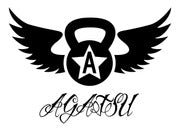
How To Fix Your Feet
All March, we’re going to be doing a deep dive into feet because they are so important.
By Senior Instructor Sarah Woods
Let’s talk about some basics.
When you wake up, you stretch out in bed and likely wiggle your toes. Then, swing your legs over the edge of the bed and your feet hit the floor. You stumble to the bathroom (in the dark) and prepare to start your day. How do those first steps FEEL?
When you get dressed, do you step into your clothes while balancing on one foot or do you sit down? Imagine getting breakfast ready, navigating steps, commuting to work (if you are leaving home) and managing any myriad of tasks on your list for the day, with a sore foot (or feet). Imagine not having the use of your feet at all.
We take functional feet for granted until they hurt or aren’t providing the support we need. This often shows up as sore knees, hips, back, or even jaw pain.
Connecting with our base
In order to maximize the function of the fabulous foot, we need to understand it.
Each foot is comprised of 26 bones, 33 joints, over a hundred muscles, tendons, and ligaments and wait for this bit: hundreds of THOUSANDS of nerve receptors.
When you stand and walk bare-foot, your foot is the SOLE part of the body directly in touch with the environment. We rely on the information (biofeedback) received through the foot, to make adjustments in gait and position, to protect the entire structure (especially the brain) and to move efficiently and effectively.
Notice how you feel walking barefoot. If you wear supportive shoes and insoles or orthotics, are you capable of doing any of the movements (in your shoes) without those tools? Can you balance on one foot with your eyes closed for 30 seconds? Can you pick up your laundry with your toes? How about hop on one foot for a minute? How does your squat feel without shoes? Would you list sprains, tendonitis, stress fractures, plantar fasciitis, or bunions (or the like) on an intake form?
These are some of the questions to consider when you begin your foot health journey.
What about shoes and orthotics?
The muscles of the foot function differently while in contact with the ground and off.
What a foot can do with both feet connected is not the same as when on one leg. So, getting a scan will not give you an accurate picture of what’s going on. You need to know what’s happening at your tripod and arches. (More on the tripod and arches coming soon!) Those insoles provide varying degrees of support to the tripod and arch BUT they don’t do anything to build muscle. Muscles atrophy if you don’t use them, resulting in joint degeneration locally, or up the kinetic chain, into the knee or hip (and beyond).
The overwhelming amount of detail
Sometimes, foot pain can be attributed to something as simple as big toe movement. If the big toe can’t move, we use several compensations to track around it. This might look like turning out the foot and rolling over the base of the big toe or through the arch, or lifting the heel early- which will put more demand on the calf, which then might result in limited knee range of motion, then tight hips… and so forth.
If it sounds complicated, you are right. But it’s because the body is freaking amazing. Our multiple systems operate synergistically and we are capable of accomplishing great things even if a part or two isn’t functioning optimally. What that means, though, is that the other parts have to work harder.
Correcting compensations or reducing/eliminating pain is not as simple a getting new shoes. We have to look around and ask better questions.
These are our goals for this month:
1- Understanding the dynamics of the foot
2-Examining our own compensations and weaknesses
3- Learning how to practice for better foot function.
Join us all month long for more on how to fix your feet!
If you feel that you need guidance, ask for help. We offer in-person and virtual consultations. Contact sarah@agatsunc.com

Leave a comment